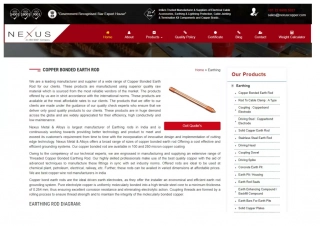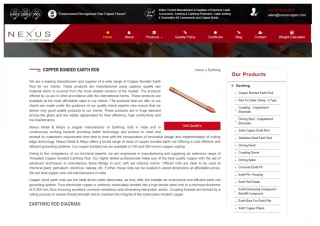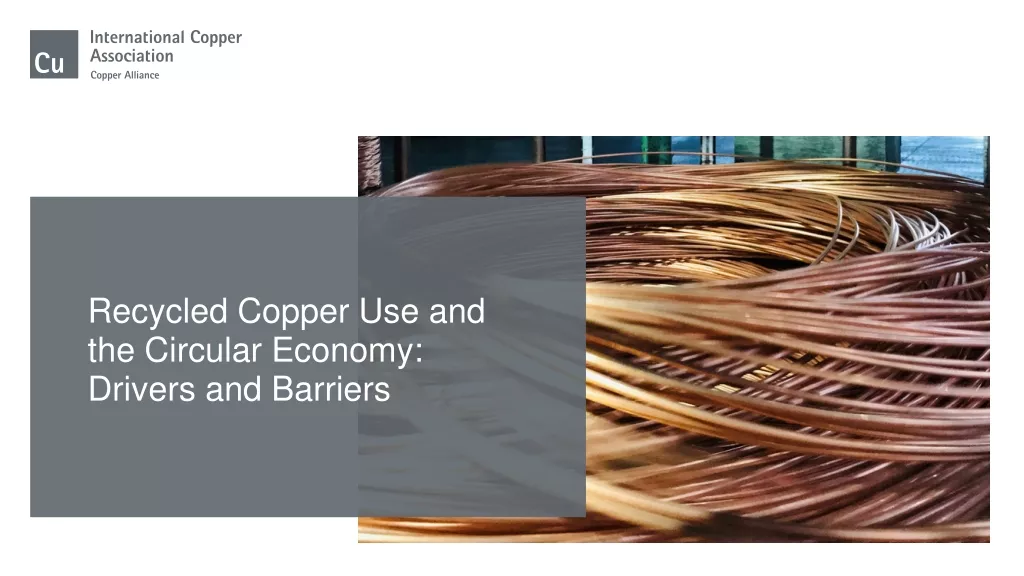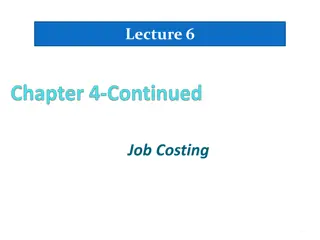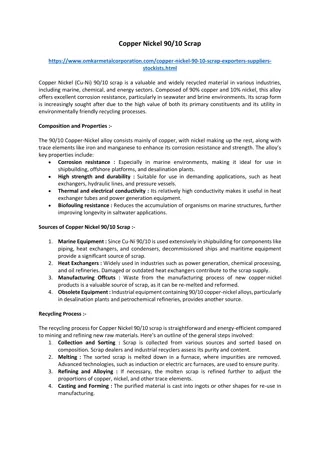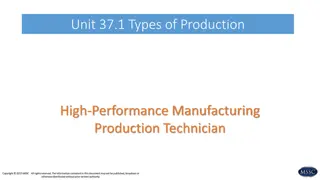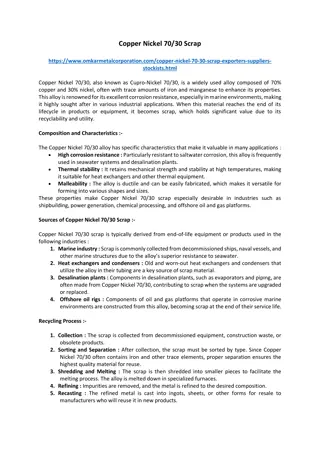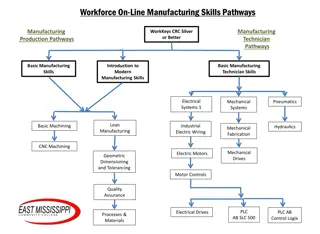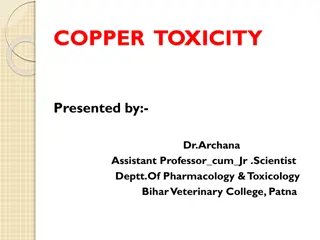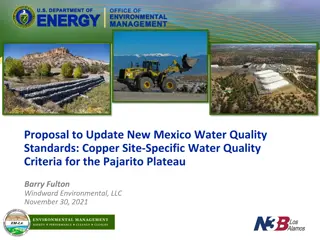Designing Quality Copper Products: The Manufacturing Process
Delve into the intricate process of designing and manufacturing copper products with a focus on quality. Understand testing requirements for various category levels and learn how OCC products are meticulously crafted to meet these standards. Explore the key parameters and technical aspects of Category 3 systems, Category 5, and beyond to ensure optimal performance. Discover the evolution of copper cabling systems, from Category 3 to Category 5, 5e, 6, and 6A, each offering enhanced capabilities. Uncover essential parameters such as NEXT, Attenuation, ACR, ELFEXT, and more that define the efficiency of these systems. Dive into the advancements in Category 5 systems, driven by the need for greater throughput over existing cabling infrastructure, and the technological improvements that enable superior performance.
Download Presentation

Please find below an Image/Link to download the presentation.
The content on the website is provided AS IS for your information and personal use only. It may not be sold, licensed, or shared on other websites without obtaining consent from the author.If you encounter any issues during the download, it is possible that the publisher has removed the file from their server.
You are allowed to download the files provided on this website for personal or commercial use, subject to the condition that they are used lawfully. All files are the property of their respective owners.
The content on the website is provided AS IS for your information and personal use only. It may not be sold, licensed, or shared on other websites without obtaining consent from the author.
E N D
Presentation Transcript
OCC Design Manufacture Process Presentation Title Goes Here Designing Quality into Every Copper Product
Laying the Groundwork Testing Requirements Able to understand testing requirements for Category levels Category 3 Category 5 and Category 5e Category 6 Category 6A and beyond Able to communicate better component level compliance and how OCC products are designed and manufactured to meet those requirements
Laying the Groundwork Category 3 Systems Capable of 10Base-T or 10 Mbps(Mega Bits Per Second) Utilized typical 4 pair cabling Only 2 pairs were utilized - 1 pair to transmit, 1 pair to receive Tx Rx Rx Tx NIC CARD (PC) SWITCH
Laying the Groundwork Category 3 Systems Key Parameters Parameter Cat 3 Cat 5 TSB95 Cat 5e Cat 6 Cat 6A NEXT Attenuation ACR PSNEXT ELFEXT PSELFEXT Return Loss
Laying the Groundwork Near End CrossTalk (NEXT) (dB) Tx Rx Rx Tx
Laying the Groundwork Category 3 Systems Key Parameters Parameter Cat 3 Cat 5 TSB95 Cat 5e Cat 6 Cat 6A NEXT Attenuation ACR PSNEXT ELFEXT PSELFEXT Return Loss
Laying the Groundwork Attenuation (dB) Tx Rx Rx Tx
Laying the Groundwork Category 3 Systems Key Parameters Parameter Cat 3 Cat 5 TSB95 Cat 5e Cat 6 Cat 6A NEXT Attenuation ACR PSNEXT ELFEXT PSELFEXT Return Loss
Laying the Groundwork ACR (dB) Tx Rx Rx Tx
Laying the Groundwork Category 5 IEEE wanted 10X more throughput (Mbps) over the same 4 pair cabling system .only over a 100 MHz system Key Parameters included: Parameter Cat 3 Cat 5 TSB95 Cat 5e Cat 6 Cat 6A NEXT Attenuation ACR PSNEXT ELFEXT PSELFEXT Return Loss
Laying the Groundwork Category 5 OCC s Patented Technology Compensation techniques for tuning of a PC Board to obtain higher bit rates from traditional 4 Pair Cabling Because of the PC Board tuning developed by OCC, the industry was able to reach the Category 5 standard or a 100BASE-T or 100 Mbps system (aka Fast Ethernet) OCC was the first to make a Category 5 connector
Laying the Groundwork Category 5 IEEE wants 10X more throughput 1000BASE-T or 1000 Mbps IEEE wants to achieve this over the installed base of Category 5 cabling IEEE asks TIA to further define Category 5 cabling systems to accommodate full bi-directional transmissions Tx/Rx Tx/Rx Tx/Rx Tx/Rx NIC CARD (PC) SWITCH Tx/Rx Tx/Rx Tx/Rx Tx/Rx
Laying the Groundwork Power Sum Near End CrossTalk (PSNEXT) (dB) Tx/Rx Tx/Rx Tx/Rx Tx/Rx Tx/Rx Tx/Rx Tx/Rx Tx/Rx
Laying the Groundwork TSB95 IEEE s further definition of Category 5 Key Parameters included: Parameter Cat 3 Cat 5 TSB95 Cat 5e Cat 6 Cat 6A NEXT Attenuation ACR PSNEXT ELFEXT PSELFEXT Return Loss
Laying the Groundwork Equal Level Far End Cross Talk (ELFEXT) (dB) Tx/Rx Tx/Rx Tx/Rx Tx/Rx Tx/Rx Tx/Rx Tx/Rx Tx/Rx
Laying the Groundwork TSB95 IEEE s further definition of Category 5 Key Parameters included: Parameter Cat 3 Cat 5 TSB95 Cat 5e Cat 6 Cat 6A NEXT Attenuation ACR PSNEXT ELFEXT PSELFEXT Return Loss
Laying the Groundwork Equal Level Far End Cross Talk (ELFEXT) (dB) Tx/Rx Tx/Rx Tx/Rx Tx/Rx Tx/Rx Tx/Rx Tx/Rx Tx/Rx
Laying the Groundwork TSB95 IEEE s further definition of Category 5 Key Parameters included: Parameter Cat 3 Cat 5 TSB95 Cat 5e Cat 6 Cat 6A NEXT Attenuation ACR PSNEXT ELFEXT PSELFEXT Return Loss
Laying the Groundwork Return Loss (RL) (dB) Tx/Rx Tx/Rx Tx/Rx Tx/Rx Tx/Rx Tx/Rx Tx/Rx Tx/Rx
Laying the Groundwork TSB95 IEEE s further definition of Category 5 Key Parameters included: Parameter Cat 3 Cat 5 TSB95 Cat 5e Cat 6 Cat 6A NEXT Attenuation ACR PSNEXT ELFEXT PSELFEXT Return Loss
Laying the Groundwork TSB95 to Category 5e TIA took all the TSB95 s parameters and cleaned it up into one standard - Category 5e Key Parameters included: Parameter Cat 3 Cat 5 TSB95 Cat 5e Cat 6 Cat 6A NEXT Attenuation ACR PSNEXT ELFEXT PSELFEXT Return Loss
Laying the Groundwork Category 6 Same testing parameters as Category 5e just at 250 MHz To ensure interoperability, OCC came out with the Pyramid Adapter a test fixture that measures and qualifies test plugs to Category standards Parameter Cat 3 Cat 5 TSB95 Cat 5e Cat 6 Cat 6A NEXT Attenuation ACR PSNEXT ELFEXT PSELFEXT Return Loss
Designing to the Standard The Pyramid Test Adapter qualifies test plugs that are within a range of Standard compliance In order to be compliant with the standard, the connector must be compliant with every test plug and to the parameters of the standard established by the Pyramid Adapter. The Pyramid Adapter helped ensure the value of each test plug and to give every manufacturer a consistent value to design their systems to one common piece which is the Pyramid Adapter
Designing to the Standard Within this range of test plugs, OCC designs our systems to the center of the range. While many manufacturers will be tuned to either the high end or the low end
Designing to the Standard If you are tuned to the high end, then typically you will not be compliant with the lower end. If you are tuned to the low end , then typically you will not be compliant with the higher end. Only by tuning to the center, can you ensure that your system can operate within the full range and guarantee interoperability and standards compliance
OCCs Design & Manufacture Process OCC is the only manufacturer that designs to the Patch Cord Test Adapter Standard (written into and above the Category 5e, 6 and 6A standards) Requirements for being compliant with the Patch Cord Test Adapter Standard include: Being tuned to the center of the test plug operating range Elevated headroom to FEXT and RL parameters. OCC is the only company who meets these requirements
The New Fixture The New Standard OCC s newest test fixtures enabled the accurate measurement of Category 6A cables and hardware in 568-B.2-10 TIA-568-C.2 consolidates all previous standards for Categories 5e, 6, and 6A The greatest change within the standard is the ability to test all Categories, not just 6A, using one test method - And one Test Fixture! The Pyramid Adapter is replaced by the OCC 6A Test Fixture
Laying the Groundwork Category 6A Same testing parameters as Category 6 just at 500 MHz Parameter Cat 3 Cat 5 TSB95 Cat 5e Cat 6 Cat 6A NEXT Attenuation ACR PSNEXT ELFEXT PSELFEXT Return Loss
Category 5e, 6 and 6A Design/Manufacture Model The 6A Test Fixture represents the written standards by TIA The 6A Test Fixture qualifies the test plugs used to determine component compliance The Test Plugs are what are used to qualify connectivity as to whether they are component compliant. In the case of OCC, our connectivity is also Patch Cord Test Adapters. Because OCC connectivity is also PCTA, our connectors also qualify our Patch Cords And because of patents within our patch cord plug design, our patch cords can also act as test plugs 6A Test Fixture Test Plugs Connectivity / PCTA Patch Cords
Category 5e, 6, and 6A Design/Manufacture Model 6A Test Fixture By following this, OCC has created a closed loop model within our design and manufacture process that references right back to the standards. Test Plugs Connectivity / PCTA Patch Cords
OCCs Design & Manufacture Model To Review: Technology was implemented through the progression of the different Category levels including the patents that OCC developed. The technology is what gave us the standards development The standards are what pushed OCC to develop the Pyramid Adapter/6A Test Fixture and the Patch Cord Test Adapter Standards And it is to these Standards that OCC uses the Design and Manufacture model on our products day to day OCC is the only manufacturer that designs to this model .
OCCs Design & Manufacture Model So how does this benefit the customer? Quality/Durability # of Insertions above standard Contact Resistance Power Safety Pins
OCCs Design & Manufacture Model So how does this benefit the customer? Performance Interoperability Benefits to Distributors and Contractors for stocking the best product for day to day business Shorter Lengths Typical ETL/UL data from competitors (90 meters for link and 100 meters for channel) are all the same As the lengths get shorter, OCC s test data is going to be well ahead because we have center-tuned our connectors Process and Change Controls Consistency in Quality USA made
OCCs Design & Manufacture Model OCC s Test & Measurement Grade Quality What does this mean? Product Grades Competitors/Major Players Residential Grade Pass & Seymour, Leviton, Dynacom, ICC Contractor (Builders) Grade Tech Choice by Ortronics, Netkey by Panduit, Leviton, Hubbell, ICC Commercial/Spec Grade Systimax/ Commscope, Ortronics, Panduit, Siemon, ADC Industrial Grade (Specialized) Woodhead, Siemon, AIS division Test & Measurement Grade OCC Test & Measurement Grade is precision, very high-controlled processes that produce products that are as near perfection to the standard as possible. OCC is the only manufacturer that offers Test & Measurement Grade products!


